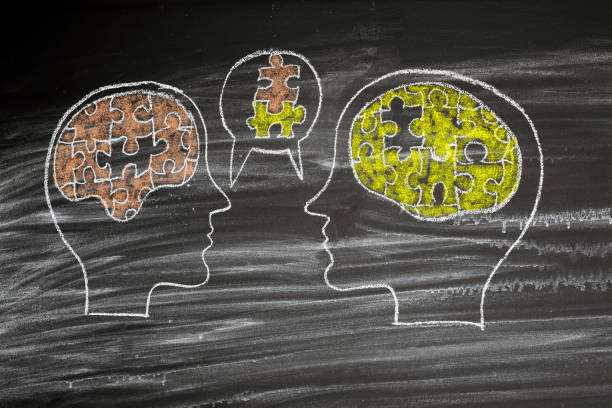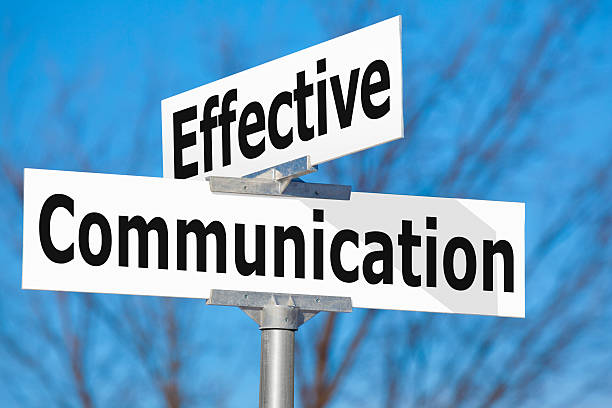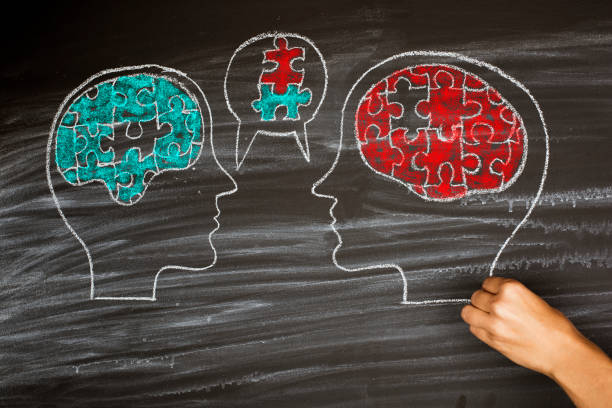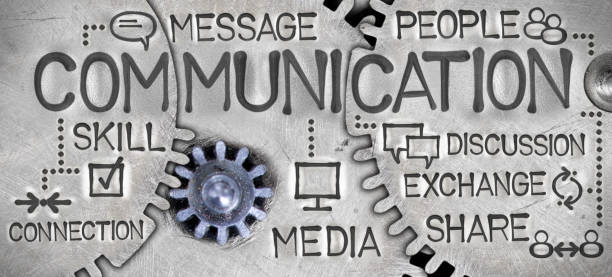Communication skills are regarded as one of the most essential soft skills – that is, talents that pertain to the way one works and interacts with others.
These abilities are the most sought after by employers. According to statistics, 93% of employers want to see soft talents on a candidate’s resume.
The importance of developing communication skills in our personal and professional lives cannot be overstated. Without these skills, effective communication is impossible.
This book will cover the definition of communication skills, the warning signals of bad communication skills, the benefits of communication skills, the 7 C’s of good communication skills, the many types of communication skills, and how to improve your communication skills.
Public speaking. Leadership. Offering feedback Dealing with conflict. Soft skills are necessary for success in the workplace. But what are they exactly? And can you cultivate and enhance them?
This guide defines communication abilities. It indicates when you must utilize them. And it provides you with techniques that make you more efficient.
People abilities are not innate. Nobody had these at birth! To succeed, you must study and practice them. The good news is that it is simple and can be learned by anyone. It is also really enjoyable to enhance your skills alongside others.
We’ve got you covered whether you’re leading a training, pitching to the CEO, or replying on the spot. This resource provides comprehensive information on workplace communication.
What are Communication Skills?
Communication is the process of sending and receiving information or messages, which can occur between two individuals or a group.
Communication skills consist of the capacity to send and receive various forms of information. It is among the most essential interpersonal abilities.
What are the indicators of inadequate communication skills?
Your communication skills must be enhanced if you hold any of the following characteristics:
- Interrupting a speaker while they are speaking
- Poor listening skills
- Excessive verbal
- omission of eye contact
- Asking questions at an unsuitable moment
- Not asking relevant questions
- Excessive use of filler words
- Too much emphasis on the speaker rather than the message.
- Making assumptions
- Distractions
- Lacking awareness of nonverbal clues
- Lack of assurance when speaking
- Considering what to say while someone is speaking with you.
- Speaking without consideration
- Sending conflicting messages – when non-verbal signs do not correspond with the (spoken) message transmitted
- Not precise and clear.
If you have observed any of these symptoms in your interpersonal interactions, you have weak communication skills. As with other skills, however, good communication skills may be developed and enhanced.
Types of communication
We communicate frequently, both at work and outside of it. That implies you employ soft skills constantly. Usually without any consideration.
It is beneficial to consider the many forms of communication you may need to employ. This helps you establish objectives for enhancing your talents.
There are seven fundamental forms of communication:
- Individualized communication. Contains abilities in active listening, empathy, feedback, and coaching.
- Public dialogue. Whenever you address a gathering of individuals. This consists of team meetings, sales pitches, and conference speeches.
- Formal communication. Similar to a wedding speech, an employment interview, or meeting minutes.
- Leadership communication: How to demonstrate confidence in your capacity to lead while remaining receptive to others’ opinions.
- Crisis communication. Confidence in decision-making, speaking “off the cuff,” and delivering orders.
- Collaboration. Cooperating effectively with others in a group and gaining consensus on decisions.
- Conflict resolution communication. Negotiation, establishing trust, and conflict resolution.
These are prevalent in the workplace. Others occur less frequently or exclusively in specific roles. Skillful communicators can handle any situation. This is because they have learnt and practiced the strategies and know when to employ them.
If you wish to develop your soft skills, here is a starting exercise. Notate the forms of communication you must employ. Then, assess your level of assurance in each. Choose three that seem significant at this time. For each of these priorities, compose a specific objective. What do you hope to accomplish with this sort of communication, and how will you know when you’ve succeeded?
For instance, you may wish to strengthen your one-on-one interactions with your line manager. Alternatively, it could be to present a case study at a conference.
Your list of objectives is a beginning point for enhancing your interpersonal abilities. Keep your objectives up-to-date as you learn and implement new strategies. Notate the progress you’ve made towards your goals.
Types of Communication Skills
There are five primary types of communication skills:
- Written communication skills
- Listening communication skills.
- Verbal communication skills
- Visual communication skills
- Nonverbal communication skills
1. Written Communication Skills
Written communication is the transmission of messages through the use of written language. In professional settings, it is the most common form of communication.
Written communication skills are the capacity to communicate effectively through the use of written language.
Effective written communication demands the following competencies:
- Utilization of correct punctuation
- Correct construction of sentences
- Knowledge of standard grammatical rules
- Appropriate language and tone usage
- Utilization of particular editing tools or software.
The following are examples of written communication:
- Emails
- Letter
- Bulletin
- Memos
- Proposals
- Blog post
- Instant messages
- Questionnaires
- Postcards
- Example: instructional materials Ebooks
- Press release, et cetera
2. Listening Communication Skills
Hearing is distinct from listening. Hearing is the act of perceiving sound, whereas listening is the deliberate effort to comprehend the sounds (messages) heard.The ability to accurately receive and analyze information or signals communicated to you.
People with superior listening abilities exhibit the following characteristics:
- Interruption-free listening
- Maintain eye contact and refrain from stating
- No judgements
- Affirm the speaker with affirmative language.
- Avoid distractions
- Observant of nonverbal cues.
3. Verbal Communication Skills
Verbal communication refers to the transmission of messages using spoken language. However, spoken communication may incorporate written language.
Verbal communication skills are the capacity to receive and deliver verbal messages accurately.
Listed below are examples of effective verbal communication skills:
- Active listening
- Pronouncing your words properly
- When appropriate, providing feedback
- Utilizing suitable language, volume, and tone
- Observe nonverbal cues.
- Using a reasonable tempo of speech; neither too fast nor too slow
- Not interrupting others while they are speaking
- Speaking with self-assurance
Verbal communication examples include:
- Press conferences
- Campaigns
- Public addresses
- Telephone calls
- Debates
- Presentations
- Dialogue in movies, television shows, etc.
- Lectures
- Board meetings.
4. Visual Communication Skills
Visual communication refers to the transmission of messages via the use of visual elements. This mode of communication is utilized frequently in presentations, website material, commercials, social media posts, etc.
Visual communication abilities are the capacity to transmit messages via the use of visual components. It also includes the capacity to interpret the meaning of visual communications.
Visual communication examples include:
- Slide deck
- Process diagrams
- Brain mapping
- Road maps
- Diagrams
- Images
- Videos
- GIFs e.t.c.
5. Nonverbal Communication Skills
Nonverbal communication is the transmission of a message without the use of spoken or written language.
Messages are transmitted using nonverbal clues such as eye contact, gestures, distance, physical appearance, time, etc.
The ability to encode and decode nonverbal stimuli constitutes nonverbal communication skills.
Encoding refers to the ability to transmit communications in a manner that may be accurately comprehended by the recipients.
Decoding is the capacity to comprehend encoded messages accurately.
Listed below are examples of nonverbal communication:
- Handwave
- As you fold your arms
- Winking
- Slouching
- Jewelry
- Tattoos
- Clothes and such
Advantages of Effective Communication Skills
1. It strengthens relationships.
Effective communication eliminates misunderstandings and disagreements, which encourages positive personal and professional connections.
People who are actively listened to feel heard and valued, which can lead to improved relationships.
2. It increases efficiency
When you comprehend an instruction or piece of information completely, you are more likely to be productive. Having a clearer understanding of the instructions can improve performance.
Students who engage in active listening during lectures, for instance, will perform better on examinations or tests.
3. Offers clarity
Good communicators are able to deliver messages in a clear and succinct manner.
In addition, when information is successfully presented, the recipient will instantly comprehend its objective.
4. Avoids and settles conflicts
Most times, disagreements emerge due to inadequate communication. The ability to communicate effectively is crucial for dispute resolution.
Additionally, effective communication minimizes the likelihood of misinterpretation, misunderstanding, and conflict.
5. It enhances collaboration
Effective communication is necessary for the success of collaborative initiatives. With excellent communication, team members may successfully share their thoughts.
6. Increase the likelihood of obtaining a new job
In addition to high GPAs, the majority of firms seek candidates with strong communication abilities.
The National Association of Colleges and Companies reports that 73.4% of employers seek candidates with good written communication abilities and 69.6% seek candidates with strong verbal communication skills.
Possessing strong written communication skills can also help you generate job-winning proposals and cover letters.
Techniques for Improving Your Communications Skills
Communication skills are essential in all facet of life, from the personal to the professional.
The following strategies can help you enhance your communication skills.
- Consider your audience
- Be prepared
- Be clear and concise
- Practice active listening
- Pay attention to nonverbal cues
- Pronounce your words correctly
- Be confident
- Ask questions
- Avoid the use of jargon
- Practice.
1. Consider your audience
No communication exists until the recipient fully comprehends the messages given. Therefore, you must always consider your audience.
To do this, you need evaluate their needs, expectations, degree of knowledge, etc. You should also establish the objective of your communications and communicate it in a straightforward manner.
2. Be prepared
Before giving a speech or presentation, ensure that you have a thorough understanding of the topic or issue you will be discussing.
Conduct research on the subject, jot down ideas, and practice delivering the messaging.
3. Be explicit and concise
All messages should be clear and simple, and the target audience must be able to easily comprehend them.
Ensure that you use basic language, stick to the subject, and omit any unnecessary information.
4. Engage in active listening
To be an effective communicator, one must be an attentive listener. Active listening is a requirement for all forms of communication.
Always give the speaker your undivided attention and prevent distractions when they are speaking.
5. Observe nonverbal cues.
According to research, nonverbal communication accounts for 55% of all communication. Nonverbal cues, such as eye contact, gestures, body postures, distance, etc., are capable of communicating countless meanings.
During talks, you should constantly maintain acceptable body postures and prevent bad body language such as crossed arms, slumped shoulders, etc.
6. Pronounce words accurately.
Always use proper pronunciation and avoid speaking too quickly. If you are unsure about how to pronounce a word, you should avoid using it.
If you are uncertain about a word’s meaning, avoid using it. Check the definitions and pronunciations of unfamiliar words in a dictionary.
Additionally, you should make reading a habit to enhance your vocabulary. Reading frequently offers several benefits, including a larger vocabulary.
7. Be confident
Always have the confidence to speak your mind, so long as it is pertinent and significant. Do not be hesitant or fearful about contributing to any conversation.
During presentations or public speeches, it is important to speak with confidence, avoid looking down, and keep eye contact with the audience. Your audience may question the credibility of your message if you present it with insecurity.
8. Ask questions
Instead of making assumptions if you do not understand a message, you should ask clarifying questions.
When contradictory messages are sent, you can inquire for explanation. Ensure that you offer questions at the proper moment, when the speaker has finished speaking.
9. Avoid use jargon.
Do not attempt to impress with difficult or arcane language. Jargons are terms used by specialists in a particular discipline or field.
If you are dealing with someone who is not in the same field as you, avoid using jargon. Jargon can lead to miscommunication.
10. Practice
It takes a great deal of work to develop strong communication abilities. You can practice by incorporating the aforementioned suggestions into your daily talks.
You can also view videos of communication specialists to gain more advice.
What is effective communication?
Effective communication produces a result. But without any consequence. One that benefits both you and the individual with whom you are speaking.
Do not fall into the trap of believing that success consists in communicating your message. You’ll be ineffective if:
- the recipient has not comprehended your message, or
- They do not believe what you are saying is pertinent or
- They find you to be useless.
Therefore, you must listen as much as you share your opinions.
Effective communication is bidirectional.
People frequently focus on the desired outcome. Or they speak without considering the relevance of their opinions to others. This doesn’t work. This is because you have not considered the perspective of your readers.
Communication is not a one-way street! It must be bidirectional. You must create a mindset that prioritizes the needs of your audience as much as your own.
Before you begin speaking, consider what the other person desires. Do they share your objectives? What is their viewpoint? Are your views superior, or are you emotionally connected to them? What if the other person’s perspective may improve your ideas and lead to a more favorable end for everyone?
Developing people skills is essential for effective communication. For instance:
- Active listening enables you to comprehend the people with whom you must collaborate.
- Effective public speaking enables you to frame a message such that it is relevant to your audience.
- Leadership qualities enable you to motivate others to collaborate with you to achieve a common objective.
These abilities, when learned and practiced, will make your communication more effective.
FAQs About Communication Skills: 2022 Complete Guide
What are the 5 C's in communication skills?
We recommend treating the 5 Cs of communication as a checklist. Remembering to be clear, cohesive, complete, concise, and concrete when communicating will help improve your writing
What are the 5 key elements of professional communication?
The elements required to be effective are trust, respect, understanding, empathy and resolution.
Which is the most effective communication model?
The best known communication models are the transmitter-receiver model according to Shannon & Weaver, the 4-ear model according to Schulz von Thun and the iceberg model according to Watzlawick.
What are the 3 communication theories?
These prominent theories are as follows:
(a) Classical Theory of Communication:
(b) Human Relations Theory of Communication:
(c) Open System Theory of Communication:
Conclusion
Communication skills are crucial in every element of our lives, whether they be personal or professional.
Employers find students with strong communication abilities more desirable than those without.
Improving or growing your communication skills will enhance your relationships with your friends, coworkers, supervisor, family members, etc.





